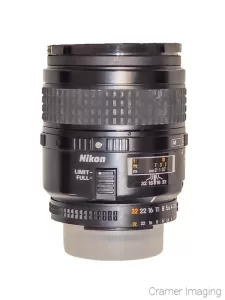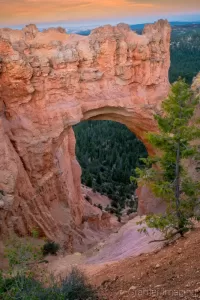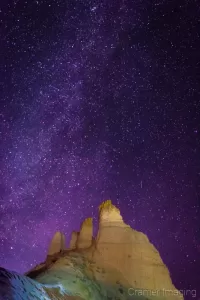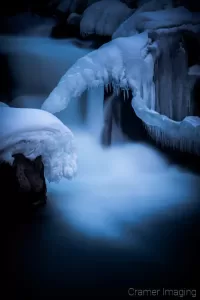
Photography is one of those uncommon arts which requires a great deal of scientific understanding as well. For someone like me, who loves both art and science, photography is the perfect hobby or career. Not sure why I say there’s science in photography? Here’s some of the sciences I need to understand as a landscape photographer for my photography.
I’ll preface this by saying that I don’t need to know all the math formulas and other nitty gritty details of these sciences to pursue landscape photography. Rather, I need to understand many of the practical applications of how these sciences affect the world around me. Then I optimize for my landscape photography based upon these sciences.

This branch of physics is concerned with how light passes through a lens. As a photographer of any kind, I’m very concerned with this particular part of photography.
Depending upon the properties of the lens, I can show a view wider than 180 degrees (fisheye), display an out-of-focus subject (improper focus), add undesired color around the edges of the photo (chromatic aberration), emphasize or diminish parallax, and fix or cause warps in panoramas (using the nodal point).
As you can see, there’s lots of serious optics involved in landscape photography. I have to understand how my camera lenses will focus the light. For that, I must have an understanding of basic optics.

This branch of physics has a really fancy-sounding name. However, it’s actually really simple. It’s the science of how celestial bodies orbit around each other. Take, for example, how the Earth revolves around the sun or how the moon orbits the Earth. It’s all part of orbital mechanics.
How do orbiting celestial bodies apply to landscape photography? You might be surprised. This science really applies to landscape photography more than you might think.
As a landscape photographer, the best times of day to shoot are at dusk and dawn. The Earth has to be in a specific point rotating around its axis for optimal landscape photography. However, it goes even further than that.
Most night photography is dominated by the moon. It’s an overpowering source of light for certain kinds of night landscapes. I need to understand when the moon will be visible and when it will not be visible to get the shot I want. All of this requires an understanding of orbital mechanics.

Astronomy plays a big part in night photography and landscape photography at night. If I want to take photos of the Milky Way, I have to know when it will be visible in the sky. There’s a window of time at night and a window during the year when it’s not visible.
If I want to take pictures of some of the planets, I have to know where they are in the sky at that time. Certain planets are only visible at certain times, like Venus, and other planets change when they are visible based on where they are in relation to the sun. I have to understand all that if I want that kind of photography.
Is there a lunar or even a solar eclipse coming? I need to know where that event will take place relative to the horizon. This helps me determine if I should focus on the celestial event or try and incorporate the landscape into the shot.
If I want to pursue star trails wrapping in a circle around the Polaris (the north star), I need to know how to find it in the sky and aim my camera lens at it. For all this, I need to understand some basic astronomy.

Here’s another fancy science term. It’s simply the science of the weather.
It should be obvious how the weather affects landscape photography. I’m entirely dependent upon how the light from the sun, moon, and stars affects the landscape I wish to photograph. The weather plays a huge role in whether such heavenly bodies are even visible and how much so if they are.
I can’t get a moody landscape scene on a bright sunny day. I can’t get a rainbow in my photo without both sun and rain at the same time. Those are only some of the reasons I need to understand meteorology.
There’s also the matter of travel and creature comforts. If the roads will be closed or dangerous because of ice and snow, I don’t get my shot. If the weather is fine now but might not be on the way home, I don’t get my shot. Also, if the weather is fine above my head but not fine where I want my shot, I don’t get my shot.
I also have to prepare for the elements personally. If it’s going to be cold, snowy, windy, or rainy, I need to prepare with appropriate clothing. Landscape photography, and waiting outside for the light to be right, can be a miserable ordeal if I’m not dressed appropriately. For all these reasons, I need a basic understanding of meteorology.
Here’s a form of science which should make some sense. I need to understand geography as a landscape photographer for several obvious reasons.

I need to know geography in order to know where to go for good landscape photos. Often times, the best places for landscape photography are not easily accessible to most humans. This pristine element adds to the landscape photo but also adds a level of preparation for me as a landscape photographer.
I must scout out the area I want a photo of. If there’s a landscape feature or a man-made feature in the way of the view, I need to know about that. If there’s one of those I want in the view, I need to know that as well.
Also, if I find myself photographing a north-south facing canyon (yes it has happened), then I need to know that. The sunlight from dawn and dusk will not be quite as flattering as usual thanks to deep shadows created by the canyon walls. I must adjust my schedule to accommodate the terrain.
Does the location have an acceptable background or do I need to find a different location to shoot from? Do I need to find a more photogenic location to shoot from because the initial location I found is boring or ugly? These are the kinds of questions I have to understand geography to answer.
I also have to understand geography to prepare myself. Will I be going on a hike? Should I bring cold weather gear because I’ll be changing elevation dramatically? Is there a good place to camp nearby if I have to hike in and stay overnight? I need to understand geography for these types of questions as well.

When I started out as a landscape photographer, I was surprised at how much I actually need to understand ecology. It doesn’t seem intuitive but it’s important.
One of the big things about ecology I must understand is protected areas for endangered species. I can’t be entering some areas and I can’t be causing problems in other areas. Doing either could disrupt the plants or animals which others are trying to preserve.
I also have to worry about spreading disease to an area accidentally. Around here, there’s been a problem with tourists accidentally spreading a fungus to bats in certain local caves. The fungus has been wiping out populations because the bats don’t have the immune system to combat the fungus.
I also dabble in wildlife photography. If I try for a wildlife shot or a landscape shot containing wildlife, I must be careful not to scare them away from food sources or breeding grounds. Such poor behavior on my part could have a devastating impact on the local animal populations. For all this and more I need an understanding of ecology.

This particular science might surprise you that a landscape photographer might need to understand unless you know something about the history of photography.
All kinds of photography, landscape photography included, used to be created using film. To develop the film and create the negative, a photographer had to use an acid-base reaction. This negative was then exposed to light and light sensitive paper to create the print. It’s the development part of photography, with the acids and bases, where chemistry is important.
I use digital means to create my photos but many other photographers are pursuing the retro art of film photography. This means that they need a solid understanding of the acid-base reaction involved with developing film. They also need to understand how to handle these chemicals safely as those chemicals are caustic.
Should I ever feel like pursuing the old art of film photography, Ansel Adams style, I will need to understand how to use the acids and bases to develop the film. I will need to know the order of which to use first, second, etc. and I will need to know how to keep both my hands and my lungs safe from the chemicals/fumes. This is where a solid understanding of chemistry comes in.
As you can see, there’s a lot of different sciences which go into landscape photography. I need working understandings of optics, orbital mechanics, astronomy, meteorology, geography, and ecology. If I want to pursue film photography, I also need a working knowledge of chemistry as well.
With all the emphasis on the art of photography, it’s easy to overlook the sciences behind landscape photography (or any photography) as well. However, there is a great deal of science behind the skill and the passion. Perhaps, the next time you hear someone refer to photography as only an art, you will be able to correct them.
Did we miss any sciences which go into landscape or other outdoor photography? Please share in the comments below. We’d love to learn together on this.


Receive monthly updates in your inbox from us.

Join our email-only photo of the week club to get the full stories behind how we captured our favorite fine art landscape photos.
We respect your privacy
No More Results